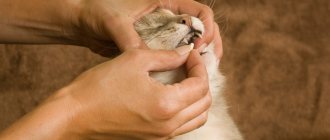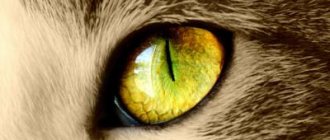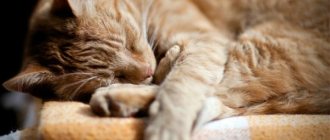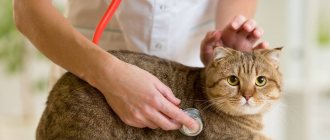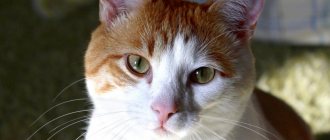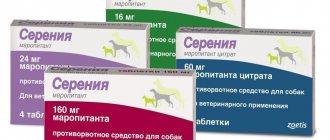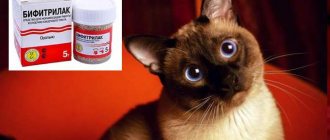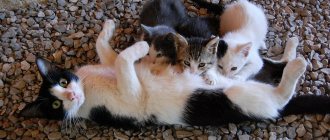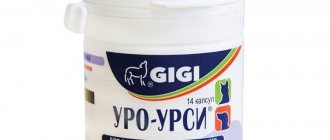Causative agent of aspergillosis
The fungus Aspergillus fumigatus is the main causative agent of the pathology. In nature, it is very widespread; it can live on the remains of vegetation, in the soil, and is also localized in hay, dust and wool. In fact, this is an ordinary mold, which tends to form many spores. In the presence of favorable conditions, aspergillus transforms into parasites, and further development processes take place in the tissues and organs of animals, and even humans.
Important! If an animal has a weakened immune system or has any inflammatory diseases of the nasal sinuses, aspergillosis will begin to develop due to contact with the fungus.
Aspergillus is the causative agent of severe disease
There are several types of mold that cause respiratory pathologies, but the most common is Aspergiliis fumigatus. Since the symptoms of infection are almost the same, it is impossible to identify the pathogen without laboratory testing.
Fungi are widespread in nature and are an integral part of the biological component, but when introduced into the body and the appropriate conditions are created, they become dangerous.
Mold releases substances that cause hemolysis and intoxication, which leads to severe clinical manifestations, complications, and death of the pet.
Spores of the parasitic fungus are resistant to the external environment and the influence of external factors, however, disinfectant solutions kill mold in a couple of hours, and boiling - within 5-10 minutes.
Course and symptoms of the disease
Aspergillosis can occur in both cats and dogs. This is a fungal infection that develops in the nose and sinuses. The disease is characterized by a number of symptoms. These include difficulty breathing in a dog or cat, sneezing or coughing, elevated body temperature, signs of intoxication, and general weakness of the pet.
Obvious clinical signs that are characteristic specifically of aspergillosis are:
- Discomfort and pain in the inside of the nose;
- Copious mucous discharge from the pet’s nose, sometimes with blood;
- Ulcers on the outside of the animal's nose that are very painful and do not heal.
The course of the disease can be limited (local) or widespread.
In a limited form of the disease, the cavities and paranasal sinuses are affected. This is due to the contact of the fungus with the nasal mucosa of the animal. In the common form of the disease, the fungus enters the body through the respiratory tract or gastrointestinal tract. Then it spreads hematogenously. Did you know? Cats and dogs are very different in personal characteristics. The hearing of cats is much better than that of dogs, the upper value reaches 65 kilohertz, in a dog it is two times lower. But dogs have a better sense of smell - a wet nose helps them, which better conducts odors and helps determine the direction from which they come.
Aspergillosis in pets
Aspergillosis is a widespread fungal disease that occurs in animals, birds and humans.
Causative agent of aspergillosis
The causative agent of aspergillosis can be classified as an opportunistic mold fungus of the genus Aspergillus. They can be in soil, rotten wood, rotting plants, wet hay and straw, wet bedding, grain, flour, cereals and dry food, water, and grow in damp and poorly ventilated areas - bathrooms and basements. The spores are persistent in the environment. Birds most often get sick, and a little less often - domestic animals and humans. The most susceptible to the disease are older animals with autoimmune diseases, diabetes mellitus, respiratory infections, as well as animals of brachiocephalic breeds and German shepherds, Rottweilers, and retrievers. Aspergillosis mainly affects the respiratory system. Infection occurs through a contaminated environment, household items, feed, and inhalation of dust. Aspergillosis is not transmitted by contact.
Symptoms of the disease
The spores penetrate the nasal cavity and attach to the epithelium, where the hyphae of the fungus grow, destroying it.
The course of the disease may vary depending on where the fungus settles. This can be the bronchi and lungs, the nasal cavity, and in cats there is also a sinoorbital form, in which the sinuses and eye orbits are affected. A severe form of the disease is accompanied by destruction of the bones of the nose, palate, frontal sinuses, and/or orbit of the eye, even the brain. With generalized aspergillosis, various internal organs can be affected. Symptoms to watch out for:
- Sneezing
- Cough
- Unilateral or bilateral nasal discharge. The character can vary from watery to purulent with a secondary bacterial infection.
- Nosebleeds, often quite profuse
- Third eyelid prolapse
- Discharge from the eyes
- Tumor formation in the muzzle area
- Enlarged lymph nodes
- Soreness in the muzzle area
- Depressed state
- Fever
- Decreased appetite
- Weight loss
- Neurological disorders
The above symptoms can also be observed with other respiratory infections, so it is necessary to carry out diagnostics to identify aspergillosis and prescribe the right therapeutic and sometimes surgical help.
Diagnosis of aspergillosis Any appointment with a doctor begins with collecting an anamnesis - the history of the pet’s life and illness. It is important for the doctor to know in what conditions the cat, dog or bird lives, what it eats, and whether there are chronic or immunodeficiency conditions. This will save time and make the diagnosis easier.
To clarify the diagnosis, the following methods and studies are often used:
- General and biochemical blood tests to assess the general condition of the body, exclude other pathologies of internal organs that may occur with similar symptoms;
- Flushes from the eyes and nose;
- X-ray of the chest, neck and head. To visualize the integrity of bone structures, excluding contrasting foreign bodies;
- Ultrasound, CT, MRI
- Rhino- or tracheobronchoscopy. They are performed under anesthesia. Visually, using a flexible tube with a camera at the end, the structure of the respiratory tract is examined.
- Simultaneously with this procedure, you can take the changed tissues for cytological, histological examination, bacterial and fungal cultures.
Treatment
After confirming the diagnosis of aspergillosis, long-term treatment is required, which most often takes several months.
With extensive growth of the fungus, surgical excision of tissue is required. This may be the removal of part of the nose with bone tissue or the orbit of the eye along with the eyeball, but most often this is a last resort in animals in severely advanced cases. Otherwise, systemic antifungal therapy is used. Use one drug or a combination of them. Treatment is usually very long. To monitor the effectiveness of prescribed medications, repeat cultures are performed. If two negative results are obtained, treatment is stopped and the animal is considered recovered.
Prevention
There is no specific prevention of aspergillosis. However, the owner's tasks are:
- Monitor the condition of your pet, regularly carry out medical examinations, hygiene and preventive procedures.
- Choose high-quality food or ready-made food that will not be contaminated with fungus.
- Keep the apartment and enclosures clean, use disinfectants from time to time.
- If you notice any symptoms of illness in your pet, you should contact a veterinary clinic, and under no circumstances should you self-medicate.
Diagnostics
It is very important to identify aspergillosis as early as possible, then the likelihood of successful treatment will be higher. Diagnosing this disease is quite difficult. Only a veterinarian can do this. The easiest way is to use a cotton swab to collect a wash from the mucous membrane of the animal’s nose.
First moisten the swab with a special saline solution, after which a rinse is taken. A diagnosis can be made based on a microscopic examination of the collected material. Unfortunately, the information is not always reliable, since even healthy dogs and cats may have representatives of the genus Aspergillus.
Find out how to cure a cat from ringworm and ear mites.
The doctor also takes an x-ray of the sinuses. In this way, bone destruction can be observed. True, this method is suitable for detecting aspergillosis in the later stages. At this stage, other, more obvious signs are obvious.
The most effective diagnostic method is the use of a flexible bronchoscope. In this case, it is not used entirely for its intended purpose, but it still helps to examine the nasal sinuses and take a tissue biopsy in the affected area on the verge of a healthy area.
Did you know? Dogs excrete sweat exclusively through the soles of their paws. This is their only way of getting rid of excess heat that has accumulated in the body. Cats have no sweat glands at all.
How the disease develops
Spores caught during breathing settle on the mucous membrane of the larynx, bronchial tree and lungs. Spreading through the bloodstream into deep tissues, they germinate, covering large areas.
As a result of the pathological process, cellular infiltrates are formed with the release of exudate, nodules or granulomas appear. When examining the affected tissue, colonies of fungi are found, consisting of branching mycelium.
Aspergillus metabolic products cause liver dystrophy and general poisoning, and their enzymes lead to the development of bronchopneumonia and the death of the animal from suffocation.
Treatment
There are a number of antifungal agents that work well against this disease. They are taken orally, after which they are absorbed by the gastric mucosa and distributed throughout the animal’s body. But they are ineffective against aspergillosis - they do not have enough power to destroy fungal plaques. The fungus is concentrated in the nasal cavity, and the only and most effective way to destroy it is through the blood supply to the nasal cavity.
Most often, veterinarians recommend using Itraconazole. This is a drug that can suppress the synthesis of ergosterol in the cell membrane of fungi. Once the membrane is destroyed, the fungus will not be able to properly absorb nutrients and will die as a result. Side effects in dogs may include abdominal pain, nausea and vomiting. It is not recommended for use in pregnant animals to prevent the development of abnormalities in the fetus.
When using Itraconazole, you need to follow the dosage for dogs: 10 mg per kilogram of animal weight. The drug is commercially available in the form of 100 mg capsules and oral suspension. Treatment of the disease can last from several months to three years. The capsules are given to the pet along with regular food, this will increase the level of absorption of the active substances into the blood. The suspension should be given to the animal only on an empty stomach.
Another drug that is used to treat pets for aspergillosis is Ketoconazole. It is capable of causing the decay of fungal cells. The essence of its work is that it inhibits the synthesis of ergosterol in the fungal cell membrane and negatively affects the permeability of cell walls. It is most often used as an additional drug for treatment, and not as the main one. It should be given to the animal along with food. Dosage: up to 40 mg per 1 kg of animal weight. Ketoconazole is usually combined with Amphotericin B.
Amphotaricin B is an antifungal antibiotic. It is very effective in fighting infections of fungal origin. It has a good effect even on diseases that are systemic in nature. But the effect can only be achieved with intravenous administration of the drug. It comes in powder form. The powder should be dissolved in 5-20 ml of dextrose solution (5%), and then administered intravenously to the animal three times a day.
The recommended dosage is 0.25 mg per 1 kg of pet weight. Observing the reaction of the pet, as well as the course of the disease, the dosage can be gradually increased to 4-8 mg per kilogram. It may take several months for the course of treatment.
In cases where the drugs do not give the desired effect and the disease continues to develop, surgical intervention will be required. It involves cutting out a small rectangle in the nasal bone to gain access to the nasal chambers and then cutting off the fungal plaques. The procedure is extremely painful, as a large number of nasal bones are removed during the process.
Important! If aspergillosis is detected in cats or dogs, treatment should be carried out immediately, as the infection can affect the central nervous system.
Cryptococcosis
This disease is very common among cats and is caused by a yeast-like fungus. Mostly, middle-aged cats suffer from cryptococcosis. The disease enters the body through airborne droplets when a cat inhales harmful fungal spores. There are a lot of them in the ground, among bird droppings. Cats with poor immunity are more likely to develop cryptococcosis, so try to give your pets more vitamins. The disease itself is divided into two types - nasal and cutaneous cryptococcosis. Half of all fungal infections are caused by nasal cryptococcosis.
The symptoms of this disease are: cough, difficulty breathing, sneezing, bleeding in the nostrils.
If treatment is not started promptly, the infection can reach the brain and cause death due to meningitis.
Cutaneous cryptococcosis accounts for 25% of all diseases. Very often the bridge of the nose begins to swell in cats. Sometimes the animal has nodules under the skin, from which pus then begins to flow. Treatment of cryptococcosis should begin as early as possible, since this is one of the most dangerous fungal diseases. Treatment must be prescribed by a veterinarian. Typically, oral antifungal drugs such as ketoconazole are prescribed in such cases. This disease takes a very long time to cure.
About diagnosing skin diseases in cats
Disease prevention
Cryptococcosis is not transmitted by direct contact, therefore, to prevent infection, contact of animals should be avoided with potentially dangerous environments where the presence of harmful microorganisms is expected: bird droppings, basements and damp rooms.
To date, there have been no recorded cases of human infection from animals with cryptococcosis, but this possibility cannot be completely ruled out, so it is recommended to handle a sick pet with caution.
General characteristics of the disease
The cause of cryptococcosis in cats is the fungal infection Cryptococcus neoformans. The disease is widespread throughout the world, and the threat of infection is also urgent for Russia. Cryptococcosis affects many mammals. Among domestic animals, it most often affects cats, in which it is the most common fungal infection, as well as cats, which get sick less often.
Infection with cryptococcosis occurs through contact with soil, as well as droppings, which contain the source of the disease - a yeast-like fungus. Under suitable weather conditions, the viability of the fungus remains up to two years.
An additional factor that increases the chances of susceptibility to cryptococcosis is an inherited immune defect. cats with ehrlichiosis and cats with leukemia are at greater risk. The immunodeficiency virus in combination with cryptococcosis will pose a serious challenge to the cat's health.
Breeds at risk
Dogs are infected with C. neoformans much less frequently than cats (the probability of infection is 7 to 10 times lower). The average age of infected dogs is 3.5 years and, unlike cats, they do not have a gender predisposition. The most common breeds affected are the American Cocker Spaniel and Labrador Retriever (in North America), the Doberman Pinscher and the Great Dane (in Australia). In dogs, cryptococcosis affects the same four organ systems as in cats, but in dogs the central nervous system and eyes are more often affected. Clinical signs are similar to those in cats, except for fever (39.4 – 40.5°C), which is more common in dogs (25% of cases). In our practice, we encounter dogs and cats of various breeds, but there are no statistics for Russia.
Is it possible to cure a bird with aspergillosis?
Aspergillosis is a very serious disease that is very difficult to cure. But probably! The target organs of aspergillosis and the way the body tries to ward off the fungus reduce the ability of drugs to penetrate the pathogen.
Treatment takes a long time, often years. The bird must have a strong immune system to completely eradicate the fungus. Treatment may include oral, intravenous, topical, and aerosol antifungal medications and/or surgical removal of fungal plaques (concentrated areas of fungal growth).
Antibacterial therapy is mandatory. This is an important point in the body being affected by a fungal infection. It does not happen that destroyed tissue cells on which colonies of fungi have begun to grow are not affected by bacteria, often conditionally pathogenic, living in large numbers in the bird’s body.
Supportive care for acute bird conditions includes hospitalization, oxygen therapy, warmth, force feeding, administration of anti-inflammatory drugs and treatment of other underlying or associated diseases.
Aspergillosis is a very complex disease that is very difficult to cure. But probably!
